Books by Cecilia Sardenberg
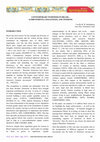
Revista Feminismos Especial Issue, 2014
In this paper, our purpose is to address issues regarding the major achievements as well as th... more In this paper, our purpose is to address issues regarding the major achievements as well as the shortcomings and challenges of feminist struggles in contemporary Brazil. In so doing, we hope to show that meeting these challenges will not be an exercise free of tensions; they have been an integral part of the outstanding capacity of feminism in Brazil to “diversify,” thus the need to use always the plural and speak of Brazilian “feminisms.” Plurality in this case does not pertain only to the incorporation of different segments of women’s movements into the ranks of feminism; carving new spaces of action, be they in the state apparatuses or in institutions of civil society at large (the NGOs, unions, and political parties, for instance), and whether in local, national, or “global” spaces, has also been equally important and mutually reinforcing. This process has demanded and promoted the “professionalization” of feminist activists and the development of what we may regard as new “feminist careers”, including academic ones. Yet, as it will be seen ahead, the exercise of “agency” in all of these different spaces and fields of action has not unfolded without “tensions”, both within feminisms as well as between feminists and other segments in the wider women’s movement.
Originally published in A.Basu (eds), Women's Movements in the Global Era. First Edition, Westview Press, 2010.

Revista Feminismos, Número Especial, 2014
Muitas questões se formulam quando se considera esses desdobramentos do feminismo contemporâneo n... more Muitas questões se formulam quando se considera esses desdobramentos do feminismo contemporâneo no Brasil. A começar, inclusive, pela própria tentativa de compreender, mais a fundo, esse momento atual de proliferação dos núcleos da mulher nas universidades brasileiras. Cabe perguntar, por exemplo, qual sua relação com o que acontece no nível dos avanços teóricos e do movimento social? E quais as perspectivas que vêm se abrindo com os núcleos no sentido da consolidação do projeto feminista em nosso meio? A complexidade dessas questões exige uma reflexão mais aprofundada, da qual este artigo é apenas um começo. Assim, à luz de uma avaliação crítica do caminho percorrido no processo de institucionalização da práxis feminista na academia, nos debruçamos sobre algumas indagações em torno de suas diferentes facetas, quais sejam: a) a conquista e legitimação de um espaço de reflexão e ação específico; b) a disseminação da produção de conhecimentos e incorporação de uma perspectiva feminista de gênero na produção e transmissão dos saberes científicos; e, por último, mas certamente não menos importante, c) as contribuições e perspectivas dessa práxis para o avanço do projeto feminista na sociedade mais abrangente e, em particular, na transformação do cotidiano da própria vida acadêmica.
Publicação original na Revista Estudos Feministas, 1994.
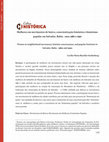
Crítica Histórica, 2019
The participation of women in social movements has been little prominent in our history and, eve... more The participation of women in social movements has been little prominent in our history and, even when studied, little attention has been directed to their activist presence in movements in the Northeast Region. Our historiography also needs further reflection on possible feminist awareness processes unleashed by this activism and how they intersect with other social determinants, such as class and race. In this article, I intend to discuss the performance of women from the Plataforma Suburbia in the neighborhood and women's movements in Salvador in the 1980s and 1990s, during which time I closely followed their struggles. In particular, I turn to the participation of women in the creation of the Association of Residents of the Platform - AMPLA and the Federation of Neighborhood Associations of Salvador - FABS, entity that led popular movements in Salvador in the period under consideration. I try to demonstrate how participation in these struggles and women's movements in the city contributed, on the one hand, to a process of "feminisation of power" in neighborhood entities and, on the other hand, to the launching of a so-called "feminist" women, and thus to the growth of a "popular feminism" in Salvador and surroundings in that period.
Caderno PAGU, 2018
In this article I retrace some paths and disputes faced by feminists in negotiating the introduct... more In this article I retrace some paths and disputes faced by feminists in negotiating the introduction of a gender perspective in development issues, with a focus on UN conferences as well as on the more recent critiques to the inclusion of gender in the Beijing + (5, 10, 15 and 20) meetings. I seek to retrace, in particular, Brazil’s participation in these disputes and the setbacks in our international policies in this field since the 2016 coup.
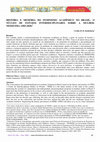
Revista Feminismos, 2020
This work analyzes the institutionalization of academic feminism in Brazil, based on the history ... more This work analyzes the institutionalization of academic feminism in Brazil, based on the history and memory of UFBA 's Center for Interdisciplinary Studies on Women - NEIM. It is the oldest nucleus of this order in the country, pioneering the creation of a department and undergraduate and postgraduate programs in feminist studies in Brazil. I argue here that feminist practice in the sciences and academia is necessary, both as a criticism of androcentrism that is prevalent in the production of knowledge, as well as with regard to the deconstruction of academic patriarchal practices and structures. Thus, I return to a discussion on the institutionalization of feminism in Brazilian universities, began more than two decades ago, reflecting, this time, not only on the paths taken and the advances registered since then, but also on the connections and tensions that have marked this path and the new challenges posed to us, 'academic feminists'. Registering the history and memory of NEIM / UFBA will allow us to see in a more substantive way these important facets of academic feminisms in Brazil, in particular, its intersection with other discursive fields of feminist action, with special attention to the formulation and implementation of policies local, national and global, that advance women's struggles. For that, I use the theoretical and methodological tools proposed by Sonia Alvarez (2014) regarding the relevance of thinking about feminist action in different spaces as discursive fields of feminist action. The trajectory of NEIM and the different activities carried out by the nucleus show the connectivity between these different fields, as well as the extent to which our history reflects the paths and (deviations) of the country's history in our nearly four decades of operation.
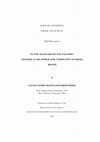
This dissertation reconstructs and analyzes work relations and everyday life of men and women tex... more This dissertation reconstructs and analyzes work relations and everyday life of men and women textile workers in a working-class neighborhood, owned by the mill, in the outskirts of the city of Salvador in Bahia. It also traces the transformation of the neighborhood and of the textile mill from 1875 to 1960. It relies on the combined results of six-years of intermittent field research in the community and in-depth interviews and life histories of twenty men and women who had worked in the factory. It is also based on the analysis of data from payroll books and other company records for a sample of 385 employees
The study takes a gender perspective and shows that women’s experience of factory work was unlike that of men. Men and women had distinct domains of influence and faced different struggles. Although the factory relied largely on the employment of the women from the community, patriarchal gender relations dominated in the workplace. Not only was the chain of command in male hands, but it was also men who led and took an active role in the local unions and in collective actions centered in the workplace. Industrial and union paternalism was reinforced by a gender ideology that emphasized women’s domesticity. It served to restrict the participation of women in labor organizations and limit their role in union-led strike movements. Women have only vague and inaccurate recollection of the strikes that were effectively organized when they themselves were part of the work force. They also idealize the paternalistic organization of the factory and the owner who put it in place.
At the same time, the textile mill’s reliance on a female labor force enhanced the position of women in their household. A right to a house or house lot and a paycheck made other members of the domestic group dependent on her. It resulted on more egalitarian gender relations within the “backyard of the factory” than within the factory itself. It indicates that gender relations, as well as class relations, do not interlock in fixed ways but that they are flexible and fluid, varying according to the sphere where men and women interact. Indeed, whereas in the past women did not take an active role in workplace-based social movements, they are now in the forefront of neighborhood-based movements, leading the present struggles of their community against their former patrons.
Drafts by Cecilia Sardenberg
Memorial de Títulos para Promoção à Categoria de Professor Titular de Antropologia da UFBA
Papers by Cecilia Sardenberg
Revista Brasileira De Enfermagem, Jun 1, 1993
Revista Feminismos, Jan 14, 2015
Revista Feminismos, Dec 15, 2020

Até fins dos anos 40, o sábado de carnaval era um dia muito especial para as operárias da Fábrica... more Até fins dos anos 40, o sábado de carnaval era um dia muito especial para as operárias da Fábrica São Braz, uma antiga fábrica de tecidos localizada no Subúrbio de Plataforma, em Salvador. Era nesse dia que as operárias 'botavam' o Bloco do Bacalhau nas ruas abrindo as comemorações momescas no bairro. Assim, ao invés de correr direto para casa tão logo soassem os apitos anunciando o fim da jornada, as mulheres se reuniam nos portões da fábrica. E mesmo exaustas e suadas depois das longas horas labutando sob forte calor e o barulho ensurdecedor das máquinas, elas não escondiam sua alegria. É que suas energias se renovavam quando a banda do bloco chegava e começava a tocar. Daí, dançando e cantando ao ritmo dos acordes da banda, as mulheres percorriam as ruas do bairro angariando aplausos e seguidores por todo o percurso. O cortejo subia a longa ladeira que ia da fábrica até a Praça São Braz e volteava-a algumas vezes, antes de

Comecemos lembrando: religiões são "representações culturais que aspiram à universalidade e são d... more Comecemos lembrando: religiões são "representações culturais que aspiram à universalidade e são determinadas por aqueles que as elaboram e não são neutros, pois impõem, justificam, legitimam projetos, regras, condutas, etc" (SILVA, 2011, p. 23). Ademais, religiões também sustentam instituições sociais que, historicamente, vem definindo e sancionando relações e representações de gênero, quase sempre em prejuízo das mulheres. Na maior parte das religiões conhecidas, a construção do divino está conectada com a produção de ideologias que desvalorizam tudo que não é masculino, figurando como elemento constitutivo das relações de gênero, sobretudo das de ordem patriarcal, legitimadoras da opressão feminina. De fato, as instituições religiosas, principalmente as monoteístas, são quase sempre androcêntricas, hierárquicas e excludentes no tocante às mulheres . Como já afirmava a feminista Elizabeth Cady Statton no século XIX: " A história mostra que a degradação moral da mulher é mais resultado de superstições teológicas do que todas as outras influências juntas" (in GROSS, 1996, p.10). Em contraponto a essas afirmativas, há evidência de que atividades de cunho religioso podem abrir importantes espaços de sociabilidade para as mulheres, criando condições propícias para o seu empoderamento. Esse é o caso dos Clubes de Mães, espaços promovidos pela Igreja Católica nos anos 1960 e 1970, que articularam as

This year, along with the 25 th anniversary of CEDAW, women in Brazil have much to celebrate. Ind... more This year, along with the 25 th anniversary of CEDAW, women in Brazil have much to celebrate. Indeed, in response to demands from feminist and women's movements, President Luis Inácio Lula da Silva has established 2004 as Ano da Mulher (Women's Year). Besides, this past July, as part of the agenda for the year, the Special Bureau of Policies for Women (SPM-Secretaria Especial de Políticas para Mulheres), also created by President Lula and with a cabinet status, held the First National Conference on Policies for Women (I Conferência Nacional de Políticas para Mulheres). Close to two thousand women delegates, chosen by their peers in regional and state conferences, assembled in Brasília to discuss and elaborate the directives for a national plan geared towards gender equity. The entire process mobilized nearly 300,000 women throughout the country, showing not only our ability to articulate diverse interests and demands, but, more importantly, showing also the real potential of feminist organisation to carry them through. This should explain why I am still in such a cheerful mood regarding the future of women's human rights in Brazil, and willing to share, with all of you, what we have learned from this entire process. Let it be remembered that twenty-five years ago, when CEDAW was drawn and approved by the United Nations, Brazil was still under the dictatorial military regime established with the 1964 coup, that severely silenced all protesting voices. Thus, only in 1984, after the so-called abertura or political "opening up" process was well under way, did our government finally approve and sign the terms of CEDAW. 2 Furthermore, nearly two decades elapsed before our first official country report was elaborated and
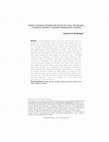
Caderno Crh, Sep 12, 2006
A coincidência entre os seus ciclos de vida reprodutivo e produtivo, face a uma divisão sexual do... more A coincidência entre os seus ciclos de vida reprodutivo e produtivo, face a uma divisão sexual do trabalho nos moldes tradicionais, sempre cria problemas para a mulher trabalhadora: como conciliar responsabilidades domésticas, principalmente o cuidar dos filhos, com o regime fabril? Esta questão foi posta para antigas operárias de uma fábrica de tecidos no subúrbio de Salvador, que funcionou, por quase um século, sob o sistema fábrica-vila operária. A partir dos seus relatos, desvenda-se, neste trabalho, não apenas como procuravam solucionar o problema, mas sobretudo como teciam, ao longo dos diferentes momentos e etapas dos seus ciclos de vida, redes de ajuda mútua com suas mães e/ou filhas, o que dava margem ao surgimento de unidades domésticas constituídas por famílias extensas matrifocais. A análise desses arranjos doméstico-familiares ao longo do tempo, permite-nos, ainda, fazer considerações sobre o entremear do ciclo de desenvolvimento dos grupos domésticos em questão, com as etapas do ciclo de vida re/produtiva das mulheres. PALAVRAS-CHAVE: Família operária, trabalho, relações de gênero, papéis familiares, cotidiano feminino. * Este trabalho é uma adaptação do Capítulo IX de minha tese de doutoramento intitulada, In the Backyard of the Factory: Gender, Class, Power, and Community in Bahia, Brazil, defendida na Boston University, em dezembro de 1996. Gostaria de agradecer à minha filha, Marina Cecilia Sardenberg de Oliveira, pela colaboração na tradução e editoração do texto, e às companheiras do NEIM/UFBA, Ana Alice Costa e Alda Britto da Motta, pelo incentivo e sugestões na elaboração do trabalho. Mas que fique aqui registrada a mea culpa por qualquer deslize que ele possa conter.










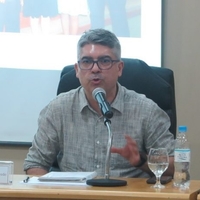
Uploads
Books by Cecilia Sardenberg
Originally published in A.Basu (eds), Women's Movements in the Global Era. First Edition, Westview Press, 2010.
Publicação original na Revista Estudos Feministas, 1994.
The study takes a gender perspective and shows that women’s experience of factory work was unlike that of men. Men and women had distinct domains of influence and faced different struggles. Although the factory relied largely on the employment of the women from the community, patriarchal gender relations dominated in the workplace. Not only was the chain of command in male hands, but it was also men who led and took an active role in the local unions and in collective actions centered in the workplace. Industrial and union paternalism was reinforced by a gender ideology that emphasized women’s domesticity. It served to restrict the participation of women in labor organizations and limit their role in union-led strike movements. Women have only vague and inaccurate recollection of the strikes that were effectively organized when they themselves were part of the work force. They also idealize the paternalistic organization of the factory and the owner who put it in place.
At the same time, the textile mill’s reliance on a female labor force enhanced the position of women in their household. A right to a house or house lot and a paycheck made other members of the domestic group dependent on her. It resulted on more egalitarian gender relations within the “backyard of the factory” than within the factory itself. It indicates that gender relations, as well as class relations, do not interlock in fixed ways but that they are flexible and fluid, varying according to the sphere where men and women interact. Indeed, whereas in the past women did not take an active role in workplace-based social movements, they are now in the forefront of neighborhood-based movements, leading the present struggles of their community against their former patrons.
Drafts by Cecilia Sardenberg
Papers by Cecilia Sardenberg
Originally published in A.Basu (eds), Women's Movements in the Global Era. First Edition, Westview Press, 2010.
Publicação original na Revista Estudos Feministas, 1994.
The study takes a gender perspective and shows that women’s experience of factory work was unlike that of men. Men and women had distinct domains of influence and faced different struggles. Although the factory relied largely on the employment of the women from the community, patriarchal gender relations dominated in the workplace. Not only was the chain of command in male hands, but it was also men who led and took an active role in the local unions and in collective actions centered in the workplace. Industrial and union paternalism was reinforced by a gender ideology that emphasized women’s domesticity. It served to restrict the participation of women in labor organizations and limit their role in union-led strike movements. Women have only vague and inaccurate recollection of the strikes that were effectively organized when they themselves were part of the work force. They also idealize the paternalistic organization of the factory and the owner who put it in place.
At the same time, the textile mill’s reliance on a female labor force enhanced the position of women in their household. A right to a house or house lot and a paycheck made other members of the domestic group dependent on her. It resulted on more egalitarian gender relations within the “backyard of the factory” than within the factory itself. It indicates that gender relations, as well as class relations, do not interlock in fixed ways but that they are flexible and fluid, varying according to the sphere where men and women interact. Indeed, whereas in the past women did not take an active role in workplace-based social movements, they are now in the forefront of neighborhood-based movements, leading the present struggles of their community against their former patrons.